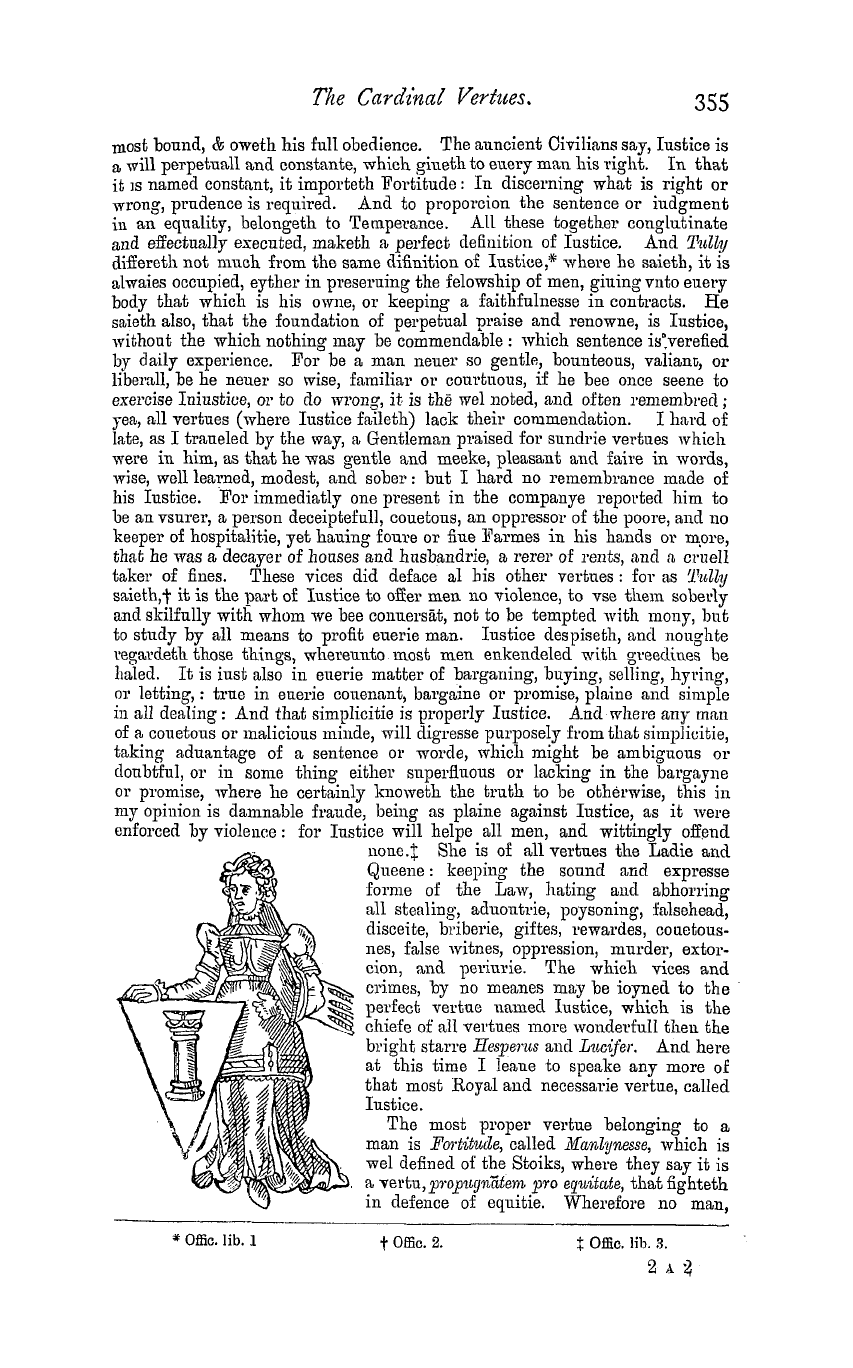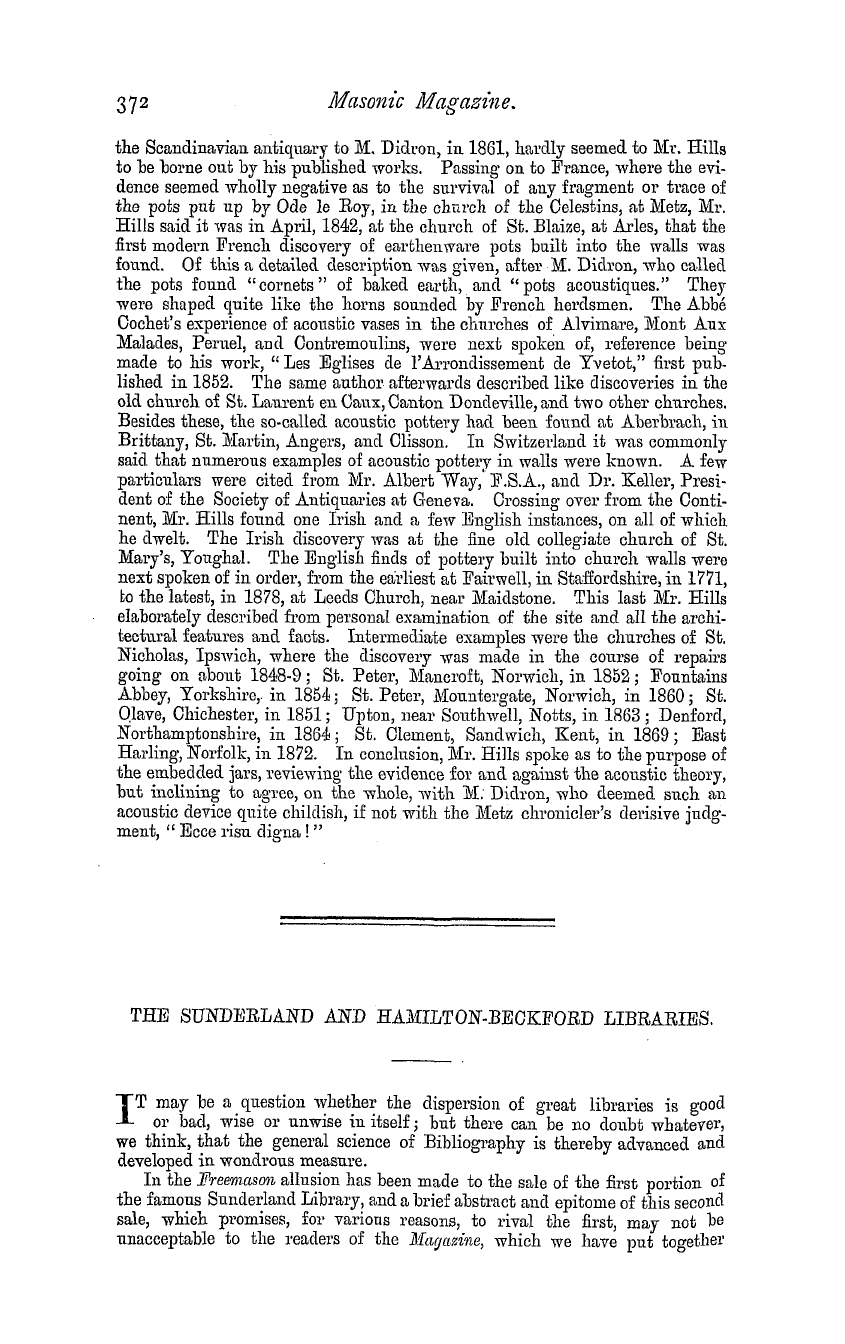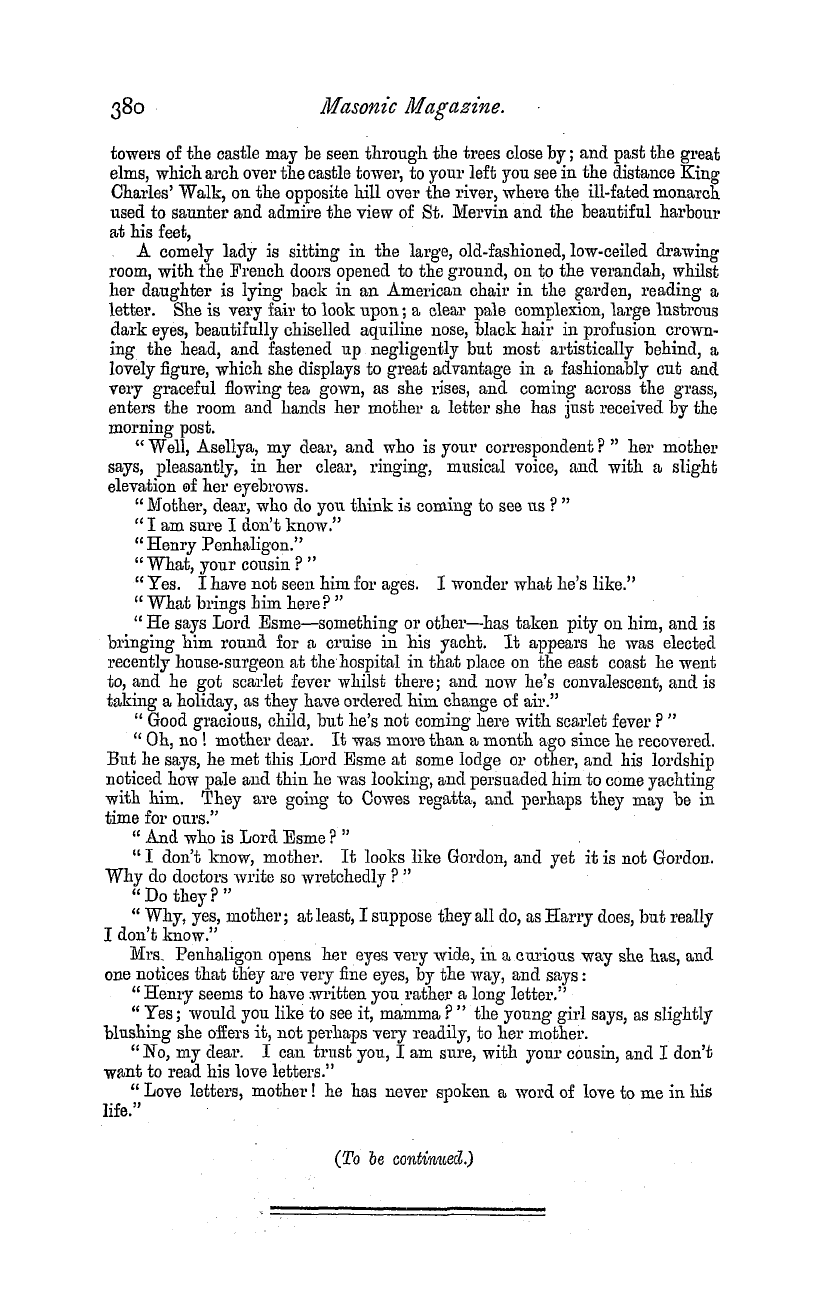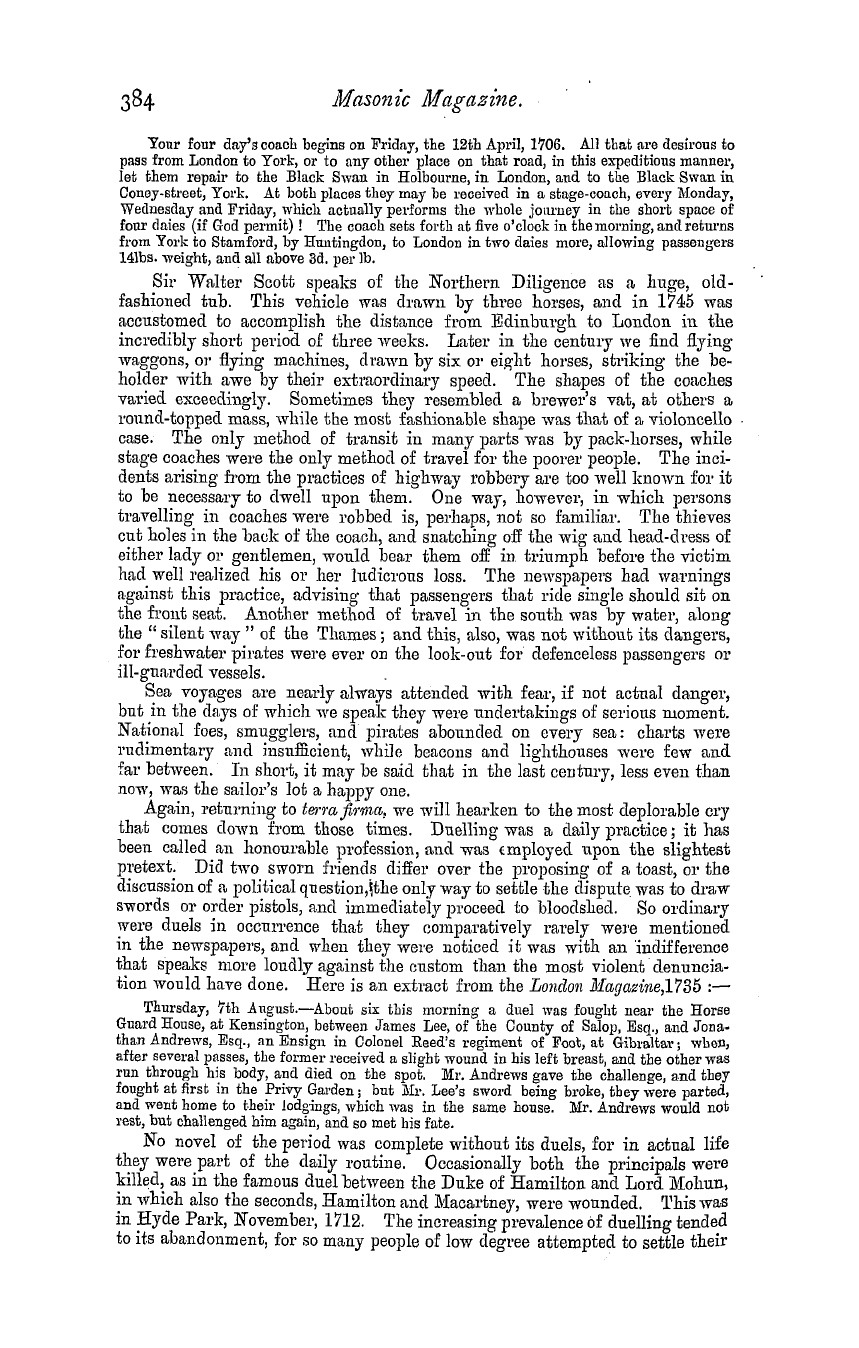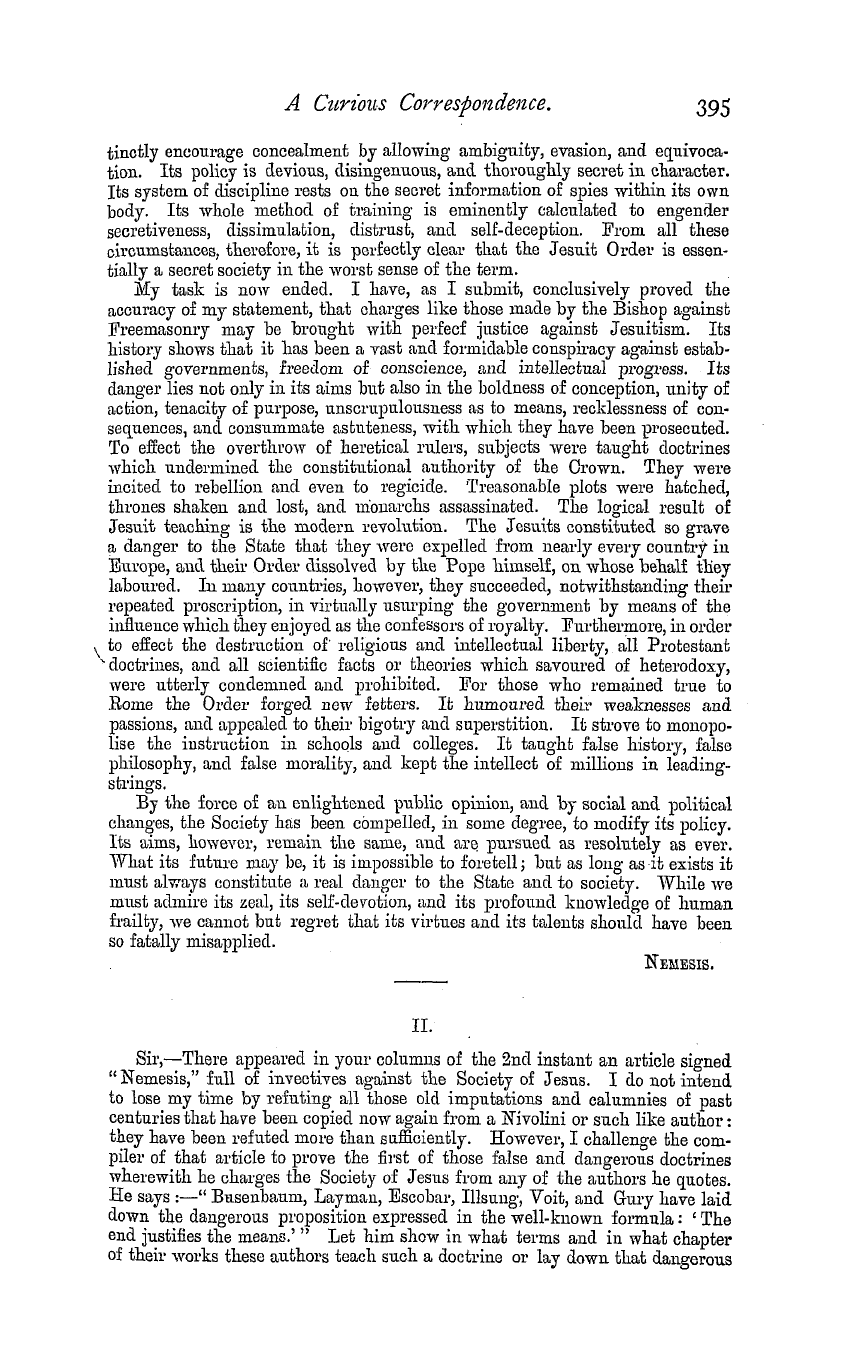-
Articles/Ads
Article DOCUMENTA LATOMICA INEDITA. ← Page 6 of 6 Article THE ROMAN COLLEGIA. Page 1 of 3 →
Note: This text has been automatically extracted via Optical Character Recognition (OCR) software.
Documenta Latomica Inedita.
such dogmata as these in a state governed by fanatics so united to God , so perfectly detached from matter . This curious essay , full as it is of digressions , which I have necessaril y shortened and omitted , will disappoint the reader in that it does not handle the great Crux of all : What is the real history of the Rose Croix ? It seems to me that we may assume that a sort of Hermetic societhas
y always existed since early times , and that it probably has greatly affected the progress of the Societ y of Freemasons . It has struck me that when Ignatius Loyola founded his famous Society of the Jesuits he framed it upon a model , and it would be both interesting ancl startlin g if , on his general assembly , his four grades , his forms of electing a general , he framed the outline of an Hermetic Rosicrncian society .
On the other hand , it is but fair to remark that , except some enigmatical words and general allusions to a society of philosophers , I have never yet been able to meet with a direct allusion to the " Fraternitas Rosse Crucis " before the first decade of the seventeenth century . I shall allude to the subject again .
The Roman Collegia.
THE ROMAN COLLEGIA .
TT is often said that the mediaeval guilds of wandering or stationary Free--L masons , who worked in their "lodges" in Minster-yards , in near the castles , the bridges , the mansions they erected , were derived from the Roman Collegia . Whether this be so or not historically , ancl a good deal may be said " pro ancl con , " matters not here , as we are only concerned in setting before our readers what is actuall y known of the Roman Collegia from authentic
sources , leaving them to draw their own conclusion from the facts before them , ancl avoiding all favourite theories , or imaginative statements . One observation is necessary . The Roman Collegia , which seem to have been founded by Numa Pompilius , were foreign in idea and members originally . They are said to have been Greek , derived from the Greek "Summoria ? " and "Koina . " These , in turn , were not ori ginal , but came from Phoenician , tianancl Indian models
Egyp , ; so that the antiquity of such collegia or socialities runs back very far indeed . We find , in the Laws of the Twleve Tables , and other juridical collections , allusions to the Collegia and the illustrative works of Muratori , Grater , Spoil , Pitiscus , and the Antiquitates Romanaa , as well as extracts from "Heineccius cle Collegiis Opificium" ( a work often quoted , though seldom seen ) , Reineecius , ancl others , convince us that such ia had
Colleg a regular existence , a well known and common part in Roman public ancl private life . We are enabled thereb y to draw an outline , if only an outline , a sketch , so to say , of the position , officers , and bearing of the Collegia . There were clearl y Collegia Publica and Collegia Privata . The public Collegia were under the direct government of the State , and took part m all State festivalsetc . The private were more or less religiousfriendl
, , y , and convivial . There were also Collegia Licita and Collegia Ulicita . The lawful Collegia were , as we said before , under the immediate direction , and control , ancl patronage of the State , ancl the Illicita were those which existed merely on sufferance , and were devotod either to the " Peregrina Sacra , " Mithraicancl Isiac , or a " Superstitio " of some kind , as the Romans viewed it ,
Note: This text has been automatically extracted via Optical Character Recognition (OCR) software.
Documenta Latomica Inedita.
such dogmata as these in a state governed by fanatics so united to God , so perfectly detached from matter . This curious essay , full as it is of digressions , which I have necessaril y shortened and omitted , will disappoint the reader in that it does not handle the great Crux of all : What is the real history of the Rose Croix ? It seems to me that we may assume that a sort of Hermetic societhas
y always existed since early times , and that it probably has greatly affected the progress of the Societ y of Freemasons . It has struck me that when Ignatius Loyola founded his famous Society of the Jesuits he framed it upon a model , and it would be both interesting ancl startlin g if , on his general assembly , his four grades , his forms of electing a general , he framed the outline of an Hermetic Rosicrncian society .
On the other hand , it is but fair to remark that , except some enigmatical words and general allusions to a society of philosophers , I have never yet been able to meet with a direct allusion to the " Fraternitas Rosse Crucis " before the first decade of the seventeenth century . I shall allude to the subject again .
The Roman Collegia.
THE ROMAN COLLEGIA .
TT is often said that the mediaeval guilds of wandering or stationary Free--L masons , who worked in their "lodges" in Minster-yards , in near the castles , the bridges , the mansions they erected , were derived from the Roman Collegia . Whether this be so or not historically , ancl a good deal may be said " pro ancl con , " matters not here , as we are only concerned in setting before our readers what is actuall y known of the Roman Collegia from authentic
sources , leaving them to draw their own conclusion from the facts before them , ancl avoiding all favourite theories , or imaginative statements . One observation is necessary . The Roman Collegia , which seem to have been founded by Numa Pompilius , were foreign in idea and members originally . They are said to have been Greek , derived from the Greek "Summoria ? " and "Koina . " These , in turn , were not ori ginal , but came from Phoenician , tianancl Indian models
Egyp , ; so that the antiquity of such collegia or socialities runs back very far indeed . We find , in the Laws of the Twleve Tables , and other juridical collections , allusions to the Collegia and the illustrative works of Muratori , Grater , Spoil , Pitiscus , and the Antiquitates Romanaa , as well as extracts from "Heineccius cle Collegiis Opificium" ( a work often quoted , though seldom seen ) , Reineecius , ancl others , convince us that such ia had
Colleg a regular existence , a well known and common part in Roman public ancl private life . We are enabled thereb y to draw an outline , if only an outline , a sketch , so to say , of the position , officers , and bearing of the Collegia . There were clearl y Collegia Publica and Collegia Privata . The public Collegia were under the direct government of the State , and took part m all State festivalsetc . The private were more or less religiousfriendl
, , y , and convivial . There were also Collegia Licita and Collegia Ulicita . The lawful Collegia were , as we said before , under the immediate direction , and control , ancl patronage of the State , ancl the Illicita were those which existed merely on sufferance , and were devotod either to the " Peregrina Sacra , " Mithraicancl Isiac , or a " Superstitio " of some kind , as the Romans viewed it ,


